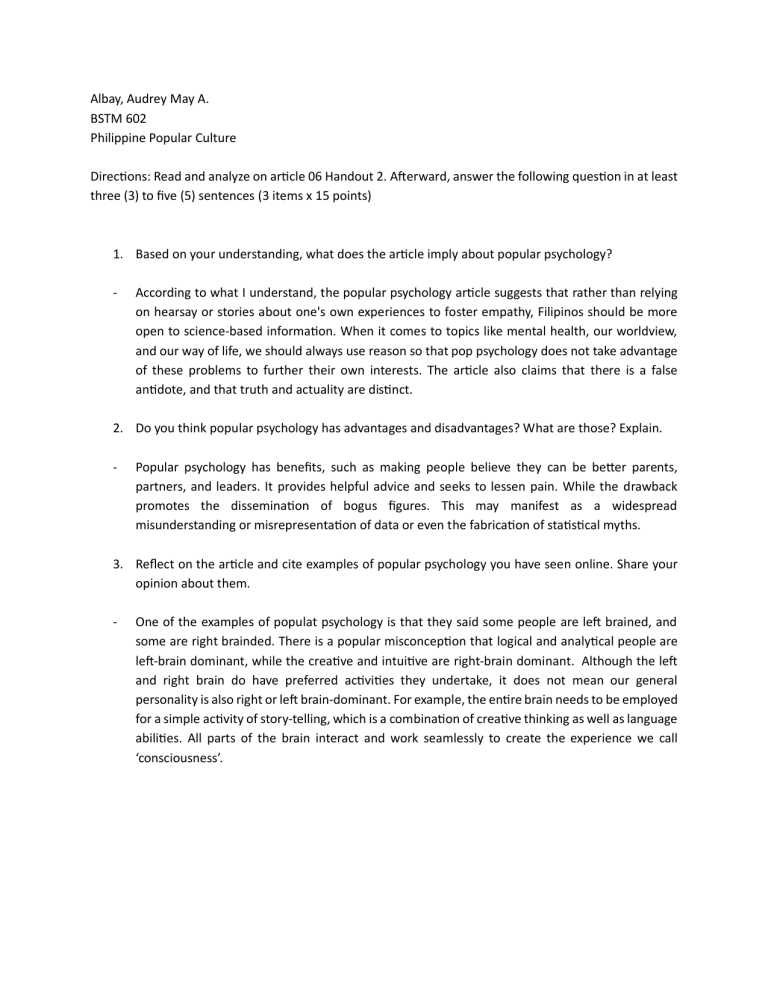
Albay, Audrey May A. BSTM 602 Philippine Popular Culture Directions: Read and analyze on article 06 Handout 2. Afterward, answer the following question in at least three (3) to five (5) sentences (3 items x 15 points) 1. Based on your understanding, what does the article imply about popular psychology? - According to what I understand, the popular psychology article suggests that rather than relying on hearsay or stories about one's own experiences to foster empathy, Filipinos should be more open to science-based information. When it comes to topics like mental health, our worldview, and our way of life, we should always use reason so that pop psychology does not take advantage of these problems to further their own interests. The article also claims that there is a false antidote, and that truth and actuality are distinct. 2. Do you think popular psychology has advantages and disadvantages? What are those? Explain. - Popular psychology has benefits, such as making people believe they can be better parents, partners, and leaders. It provides helpful advice and seeks to lessen pain. While the drawback promotes the dissemination of bogus figures. This may manifest as a widespread misunderstanding or misrepresentation of data or even the fabrication of statistical myths. 3. Reflect on the article and cite examples of popular psychology you have seen online. Share your opinion about them. - One of the examples of populat psychology is that they said some people are left brained, and some are right brainded. There is a popular misconception that logical and analytical people are left-brain dominant, while the creative and intuitive are right-brain dominant. Although the left and right brain do have preferred activities they undertake, it does not mean our general personality is also right or left brain-dominant. For example, the entire brain needs to be employed for a simple activity of story-telling, which is a combination of creative thinking as well as language abilities. All parts of the brain interact and work seamlessly to create the experience we call ‘consciousness’.



